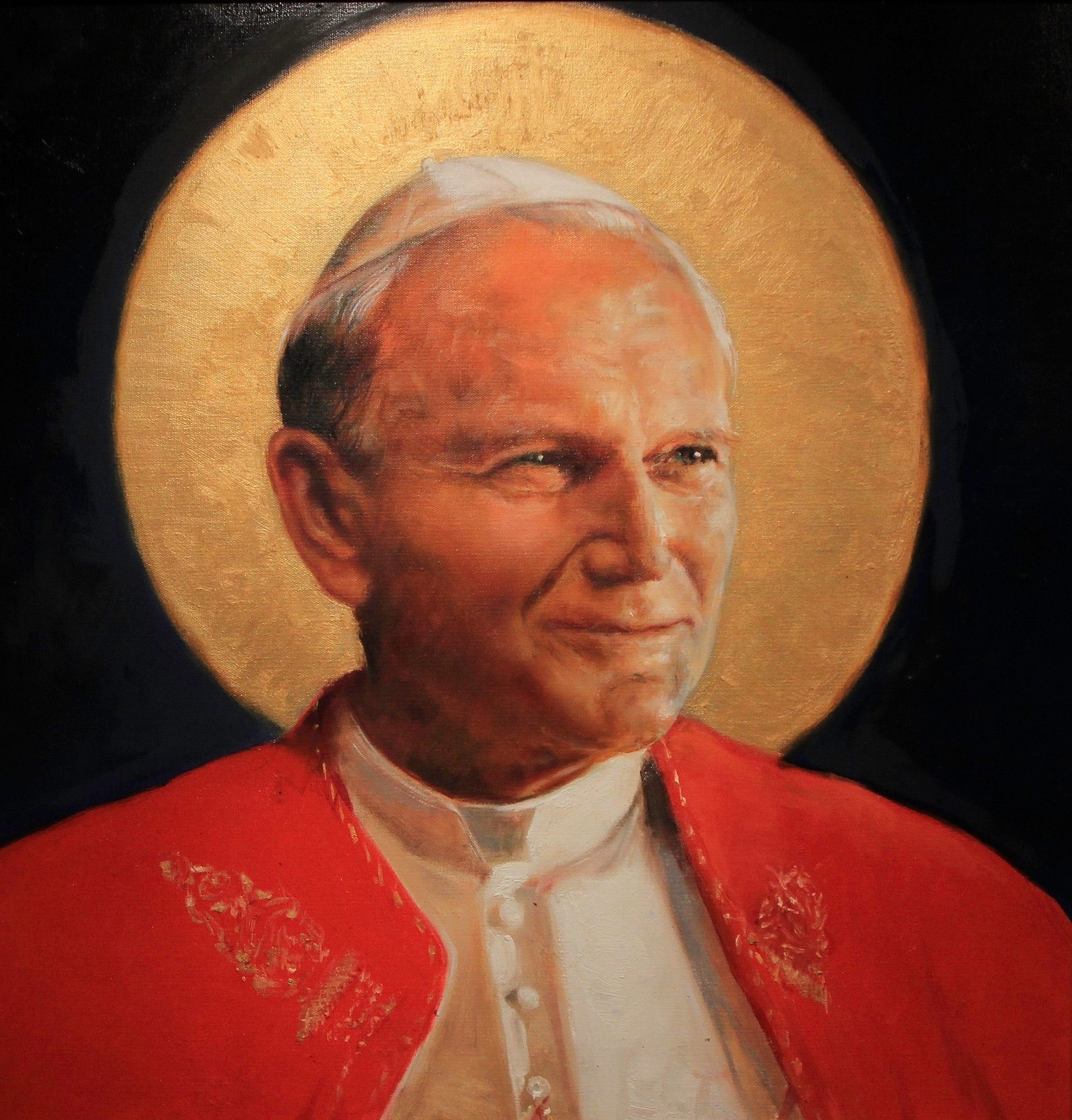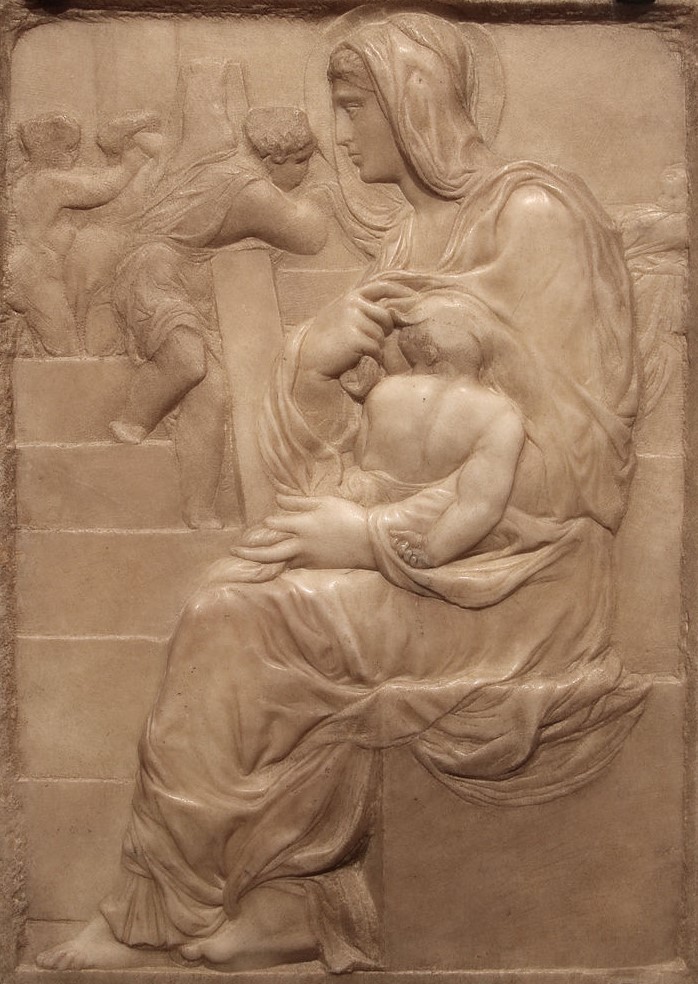St. Pope John Paul II: Mary’s Unique Cooperation
Saint Pope John Paul II
At a general audience on within the setting of a Liturgy of the Word, the Holy Father offered the following reflections.
“I will put enmity between you and the woman, and between your offspring and hers: he will strike at your head” (Gen 3:15).
Mary’s Unique Cooperation
Dearest brothers and sisters,
In this month of May we raise our eyes to Mary, . . .
. . . the woman who was associated in a unique way in the work of mankind’s reconciliation with God. According to the Father’s plan, Christ was to accomplish this work through his sacrifice. However, a woman would be associated with him, the Immaculate Virgin who is thus placed before our eyes as the highest model of cooperation in the work of salvation.
The account of the fall of Adam and Eve shows the participation of a woman in sin; however, it also recalls God’s intention to take a woman as an ally in the struggle against sin and its consequences. An altogether special illustration of this intention is found in the episode of the Annunciation, in which God offered the Virgin of Nazareth the higher kind of motherhood, asking her consent to the coming of the Saviour of the world. The Second Vatican Council very aptly stressed: “The Father of mercies willed that the consent of the predestined mother should precede the Incarnation, so that just as a woman contributed to death, so also a woman should contribute to life” (Lumen Gentium, 56).
How could we fail to see in this a singular enhancement of the female personality? In Mary is found the complete emancipation of woman: it is in the name of all mankind that the Maiden of Nazareth is invited to say the “Yes” expected by God. She becomes God’s privileged collaboratrix in the New Covenant.
Mary’s Cooperation
Mary did not disappoint him who sought her cooperation.
Her response signaled a decisive moment in the history of mankind, and Christians rightly are pleased to repeat it in prayer, striving to adopt the disposition of spirit that inspired it: “I am the servant of the Lord; let it be done to me as you say” (Lk 1:38).
The Second Vatican Council comments on these words, pointing out their great import. “By thus consenting to the divine utterance, Mary, a daughter of Adam, became the mother of Jesus. Embracing God’s saving will with a full heart and impeded by no sin, she devoted herself totally as a handmaid of the Lord to the person and work of her Son. In subordination to him and along with him, by the grace of Almighty God she served the mystery of redemption” (Lumen Gentium, 56).
Mary’s Commitment
The “Yes” of the Annunciation constituted not only the acceptance of the offered motherhood, but signified above all Mary’s commitment to service of the mystery of the Redemption. Redemption was the work of her Son; Mary was associated with it on a subordinate level. Nevertheless, her participation was real and demanding. Giving her consent to the angel’s message, Mary agreed to collaborate in the whole work of mankind’s reconciliation with God, just as her Son would accomplish it.
During the Presentation in the Temple, Mary had a first clear reference to what would be the kind of life chosen by Jesus. After telling of the oppositions the Child would encounter in his mission, Simeon turned to her and told her, “And you yourself shall be pierced with a sword” (Lk 2:35). The Holy Spirit had moved Simeon to come to the Temple at the very moment when Mary and Joseph arrived there to present the Child. Under the inspiration of the Holy Spirit, Simeon uttered the prophetic words that enlightened Mary on the sorrowful destiny of the Messiah and on the great drama in which her motherly heart would be involved.
Mary then understood more clearly the significance of the Presentation. To offer her Son was to expose herself willingly to the sword. Committed by the “Yes” of the Annunciation and prepared to reach to the very depths in the giving of herself to the work of salvation, Mary did not retreat from the prospect of the great suffering that was foretold for her.


The Madonna of the Stairs (or Madonna of the Steps): Italian Artist: Michelangelo: 1490
This is a relief sculpture by Michelangelo, residing in Florence. Created in approximately 1490 when Michelangelo was about fifteen and is one of his first two sculptures.
“The Father of Mercies willed that the consent of the Predestined Mother should precede the Incarnation, so that just as a woman contributed to death, so also a woman should contribute to life”
Link to The Queen: Articles
To the Very End
The orientation toward the redemptive sacrifice dominated Mary’s entire life as a mother.
Unlike other mothers who cannot know in advance the sorrows that will come to them from their children, Mary already knew from those first days that her motherhood was on the way to a supreme trial.
For her, participation in the redemptive drama was the end of a long road. After seeing how the prediction about the opposition Jesus would undergo was fulfilled in the events of his public life, she understood more keenly, at the foot of the cross, the meaning of those words, “And you yourself shall be pierced with a sword.”
Her presence on Calvary, which allowed her to unite herself with the sufferings of her Son with all her heart, was part of the divine plan; the Father wanted her, called to the most total cooperation in the mystery of redemption, to be integrally associated with the sacrifice and share all the pains of the Crucified, uniting her will to his in the desire to save the world.
This association of Mary’s in the sacrifice of Jesus emphasizes a truth that finds application in our lives also; those who live closely united to Christ are destined to share deeply in his redemptive suffering.
As we thank Mary for her cooperation in the work of redemption, we cannot fail to ask her motherly help for us in our turn to be able to follow the way of the Cross and through the offering of our sufferings to attain a more fruitful life.


